SNVSBU7 September 2020 LM34966-Q1
PRODUCTION DATA
- 1 Features
- 2 Applications
- 3 Description
- 4 Revision History
- 5 Description (continued)
- 6 Pin Configuration and Functions
- 7 Specifications
-
8 Detailed Description
- 8.1 Overview
- 8.2 Functional Block Diagram
- 8.3
Feature Description
- 8.3.1 Line Undervoltage Lockout (UVLO/SYNC/EN Pin)
- 8.3.2 High Voltage VCC Regulator (BIAS, VCC Pin)
- 8.3.3 Soft Start (SS Pin)
- 8.3.4 Switching Frequency (RT Pin)
- 8.3.5 Clock Synchronization (UVLO/SYNC/EN Pin)
- 8.3.6 Current Sense and Slope Compensation (CS Pin)
- 8.3.7 Current Limit and Minimum On-time (CS Pin)
- 8.3.8 Feedback and Error Amplifier (FB, COMP Pin)
- 8.3.9 Power-Good Indicator (PGOOD Pin)
- 8.3.10 Hiccup Mode Overload Protection
- 8.3.11 Maximum Duty Cycle Limit and Minimum Input Supply Voltage
- 8.3.12 MOSFET Driver (GATE Pin)
- 8.3.13 Overvoltage Protection (OVP)
- 8.3.14 Thermal Shutdown (TSD)
- 8.4 Device Functional Modes
- 9 Application and Implementation
- 10Power Supply Recommendations
- 11Layout
- 12Device and Documentation Support
- 13Mechanical, Packaging, and Orderable Information
Package Options
Mechanical Data (Package|Pins)
- PWP|14
Thermal pad, mechanical data (Package|Pins)
- PWP|14
Orderable Information
9.4 System Examples
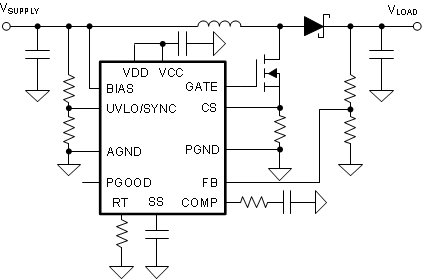 Figure 9-3 Typical Boost
Application
Figure 9-3 Typical Boost
Application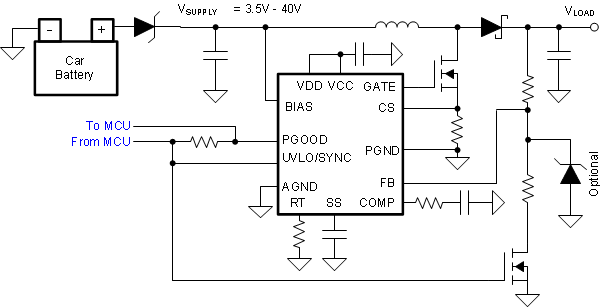 Figure 9-4 Typical Start-Stop Application
Figure 9-4 Typical Start-Stop Application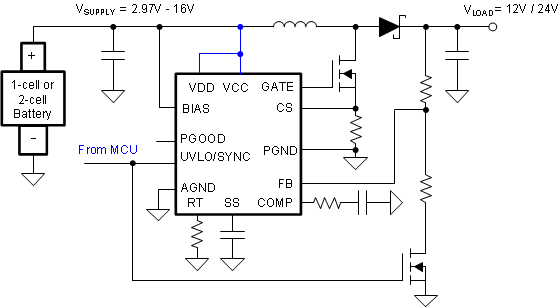 Figure 9-5 Emergency-call / Boost On-Demand /
Portable Speaker
Figure 9-5 Emergency-call / Boost On-Demand /
Portable Speaker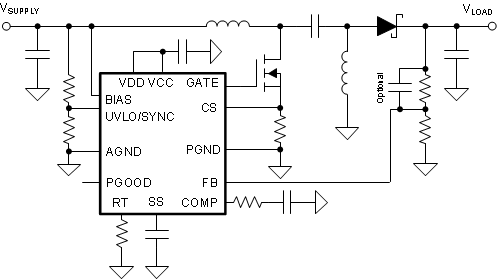 Figure 9-6 Typical SEPIC Application
Figure 9-6 Typical SEPIC Application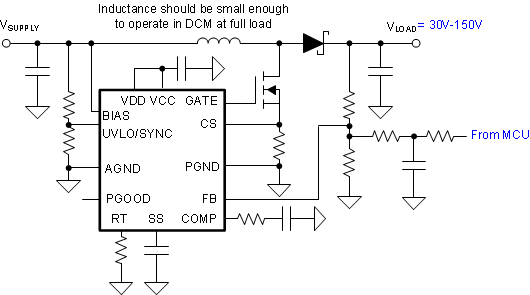 Figure 9-7 LIDAR Bias Supply 1
Figure 9-7 LIDAR Bias Supply 1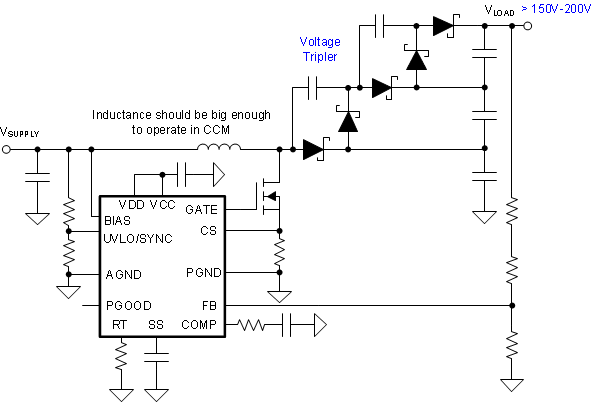 Figure 9-8 LIDAR Bias Supply 2
Figure 9-8 LIDAR Bias Supply 2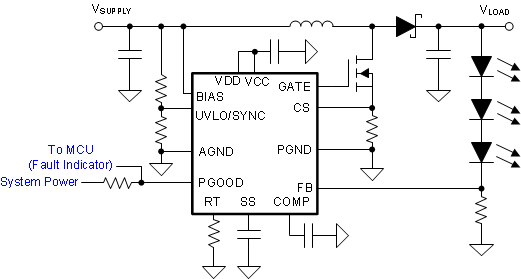 Figure 9-9 Low-Cost LED Driver
Figure 9-9 Low-Cost LED Driver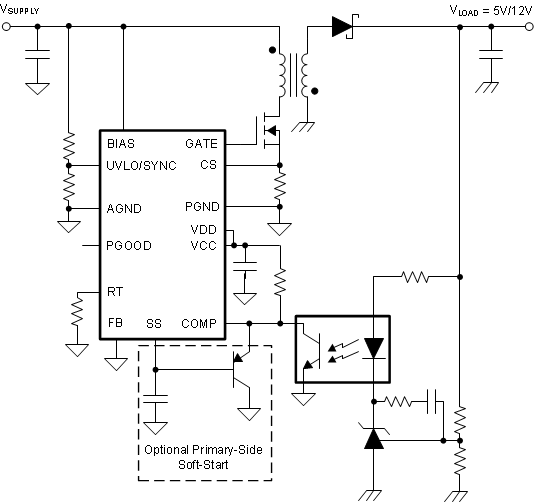 Figure 9-10 Secondary-Side Regulated Isolated
Flyback
Figure 9-10 Secondary-Side Regulated Isolated
Flyback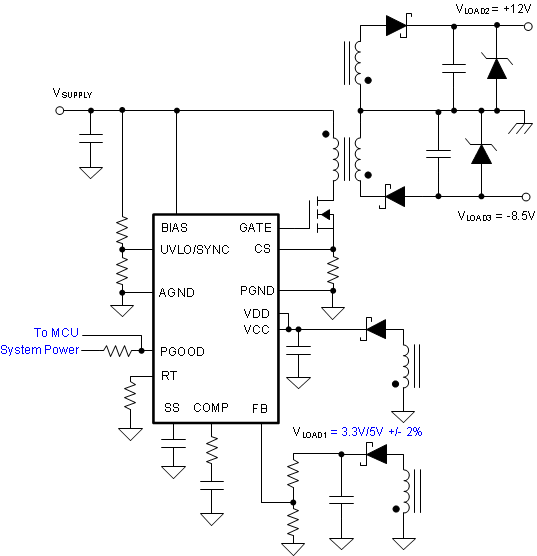 Figure 9-11 Primary-Side Regulated Multiple-Output
Isolated Flyback
Figure 9-11 Primary-Side Regulated Multiple-Output
Isolated Flyback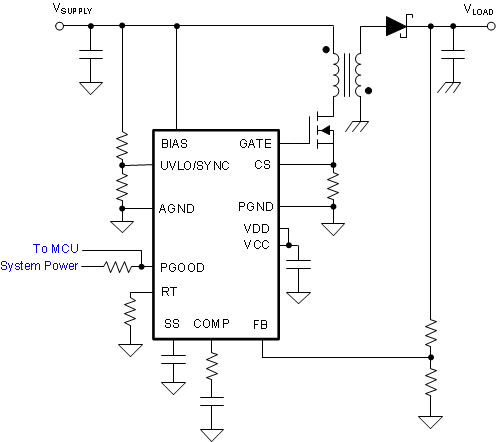 Figure 9-12 Typical Non-Isolated Flyback
Figure 9-12 Typical Non-Isolated Flyback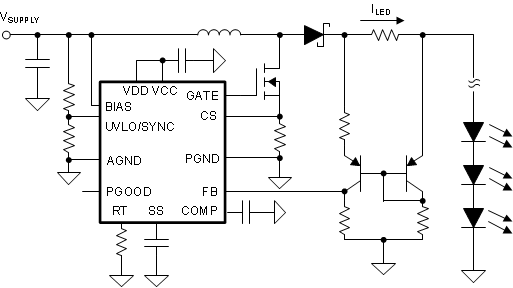 Figure 9-13 LED Driver with High-Side Current
Sensing
Figure 9-13 LED Driver with High-Side Current
Sensing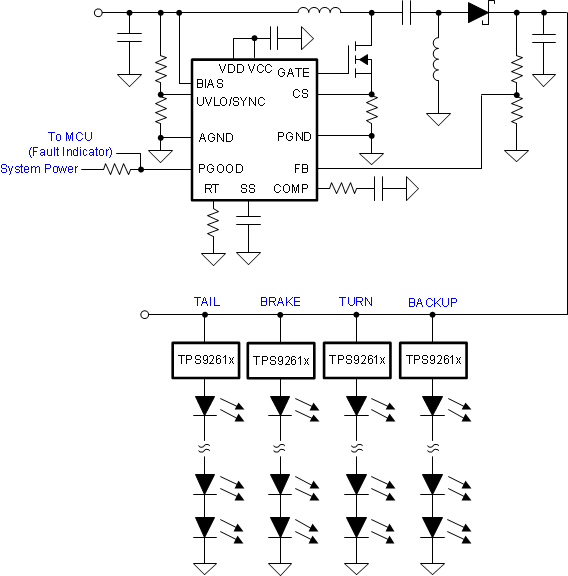 Figure 9-14 Dual-Stage Automotive Rear-Lights LED
Driver
Figure 9-14 Dual-Stage Automotive Rear-Lights LED
Driver